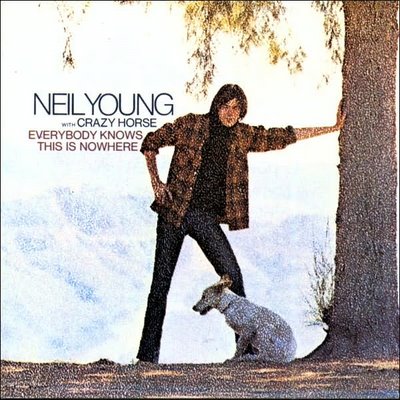
"Couldn't Stand The Weather" is one of the greatest sophomore albums every created by any kind of musician, especially a blues player. A follow up to his 1983 release "Texas Flood", Couldn't Stand The Weather has a very unique sound to it, and in my opinion sticks out from Stevie Ray Vaughan's broad catologue of guitar shredding.
The album starts out with the instrumental titled "Scuttle Buttin", which is an instrumental with that groovy texas guitar work slightly similiar to that on "Rude Mood" and Stevie's previous album. The song starts with a very quick complicated guitar riff, that would make any southern blues man smile from ear to ear.
The next song on the album is the name of the album, otherwise known as "Couldn't Stand The Weather." The song starts with a slow guitar solo backed by the "metal rain" of cymbals that sounds more similiar to the ending of a song rather than the begining. Vaughan's tone soars and is guranteed to bring a smile to strat-junkies face when you hear the faint sound of his Fender Vibro-Verb producing those late 60's sounds Gilmour, Clapton, and Hendrix are heavily acclaimed for. The song then moves into a very funky shredding guitar riff that sounds like a cross between funk, blues, and soul. You can really hear Stevie's soul shine throughout his solo's he plays during the song. Eventually the song comes to a close, with a very similiar "metal rain" sound you hear at the beginning of the song.
 The next song on the album "The Things That I used to do" is a very texas-blues inspired Buddy Guy cover that does the old blues man justice. Vaughan was always very famous for his "call and response" method of blues playing where the singer 'calls' and the guitar provides the 'response' which is nearly exclusively used throughout this song.
The next song on the album "The Things That I used to do" is a very texas-blues inspired Buddy Guy cover that does the old blues man justice. Vaughan was always very famous for his "call and response" method of blues playing where the singer 'calls' and the guitar provides the 'response' which is nearly exclusively used throughout this song.The next song on this album (and one of my personal all time favorites) is a Jimi Hendrix cover that Stevie (and myself) had been playing since his high school days, and really shows of the southern gentleman's virtuosity he holds over the instrument. While listening to the song you can vividly imagine a very happy Hendrix playing this song next to a very happy Stevie Ray Vaughan up in the clouds. Stevie is definetely channeling his biggest influence on this song, and it shines as bright as the setting's on his mid-sixties Fender Super Reverb.
The next song on the album "Cold Shot" features Vaughan's Fender Vibro-Verb throughout the entire song, a rarity for him. While listening to this song you can nearly imagine all the young guitarists first learning how to play blues trying to play this song in a tiny bar of some sorts. The song also has a nice churning slow blues shuffle solo to go along with it.
The next song on the album "Tin Pan Alley" shows off again Vaughan's call and response method again, with slow soloing and harmonics popping up all over "Number One's" neck. Dynamics are heavily expressed throughout this song as Stevie sings "I heard a woman scream" and almost immediately after, his guitar let's out one hell of a wailing note.

To close this blues master-piece, Jimi Hendrix, whoops I meant Stevie Ray Vaughan closes the album with another Hendrix favorite, Little wing. Although Jimi typically sung when he played this song, Stevie decided to do an instrumental version more similiar to Paul Butterfield's when he famously played with Hendrix in France. Stevie yet again show's almost theatrical dynamics throughout the entire song, as well as harmonizing. Who said that being the best guitar player involved shredding the entire time? You can really feel, see, hear, and bury yourself inside of Stevie Ray Vaughan's soul as he pours every last ounce of it into this song.
http://www.youtube.com/watch?v=N_Agp9mUG-M
The next song on the album "Tin Pan Alley" shows off again Vaughan's call and response method again, with slow soloing and harmonics popping up all over "Number One's" neck. Dynamics are heavily expressed throughout this song as Stevie sings "I heard a woman scream" and almost immediately after, his guitar let's out one hell of a wailing note.
To close this blues master-piece, Jimi Hendrix, whoops I meant Stevie Ray Vaughan closes the album with another Hendrix favorite, Little wing. Although Jimi typically sung when he played this song, Stevie decided to do an instrumental version more similiar to Paul Butterfield's when he famously played with Hendrix in France. Stevie yet again show's almost theatrical dynamics throughout the entire song, as well as harmonizing. Who said that being the best guitar player involved shredding the entire time? You can really feel, see, hear, and bury yourself inside of Stevie Ray Vaughan's soul as he pours every last ounce of it into this song.
http://www.youtube.com/watch?v=N_Agp9mUG-M

